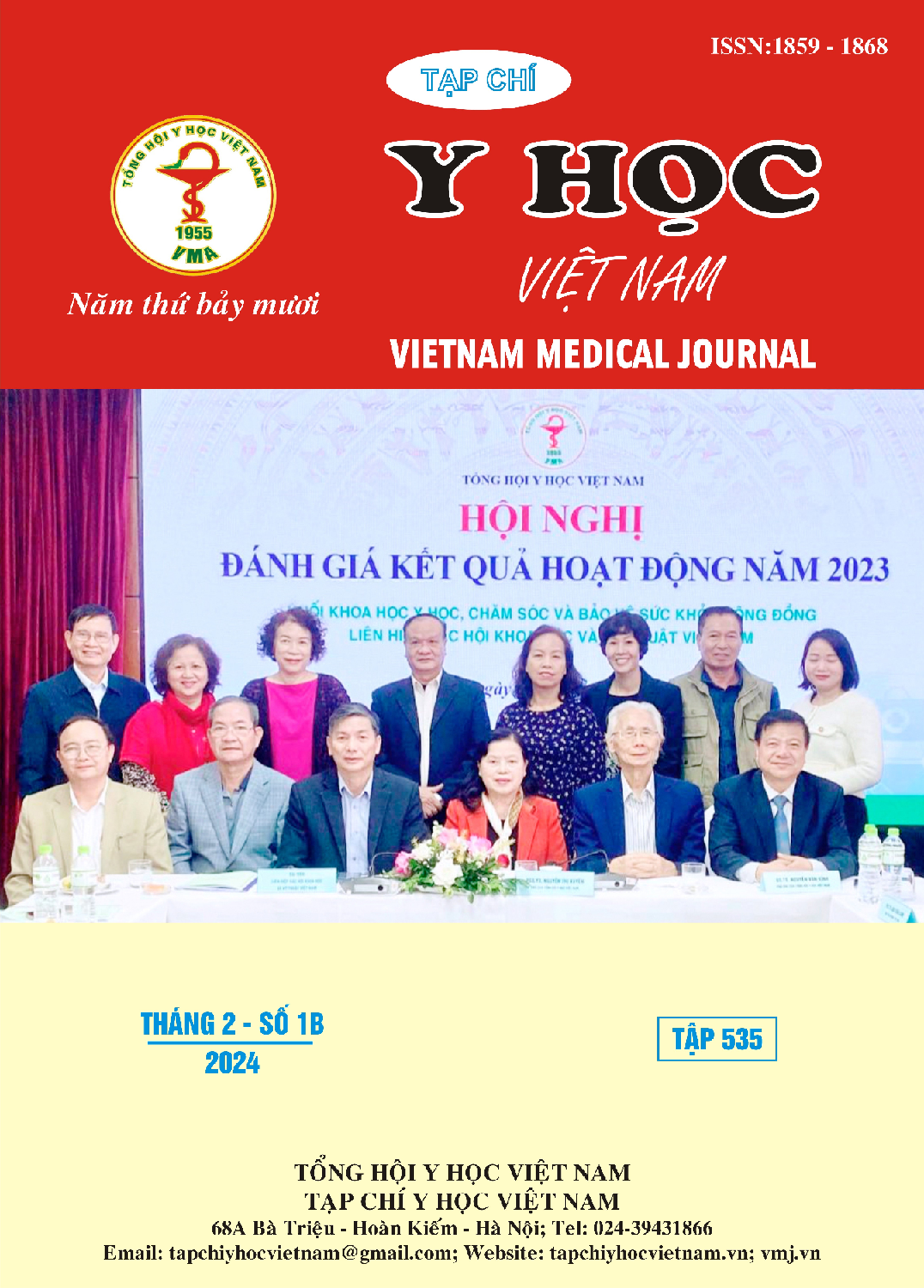CLINICAL OUTCOME AFTER LEFT-TO-RIGHT SHUNT CLOSURE IN PATIENTS WITH PULMONARY ARTERY HYPERTENSION DUE TO ATRIAL SEPTAL DEFECT, VENTRICULAR SEPTAL DEFECT AND PATENT DUCTUS ARTERIOSUS
Main Article Content
Abstract
Background: Intervention to close the left-right shunt by surgery or percutaneous procedure in patients with atrial septal defect, ventricular septal defect and patent ductus arteriosus in Vietnam as well as low- and middle-income countries is often common. performed when the disease has severe pulmonary arterial hypertension. Data on pulmonary hemodynamic parameters affecting clinical outcomes in these patients remain limited. Objective: To evaluate short-term and long-term clinical outcomes after left-right shunt closure intervention by procedure or surgery in patients with severe pulmonary arterial hypertension due to ASD, VSD and PDA. Methods: We performed a retrospective and prospective cohort study of all cases of ASD, VSD and PDA with severe pulmonary arterial hypertension undergoing cardiac catheterization to measure pulmonary vascular resistance before left-right shunt closure from April/ 2017 to April 2022 at the Heart Institute of Ho Chi Minh City. Kaplan-Meier curves, Cox regression with Firth correction were used for analysis. Results: A total of 110 consecutive patients (mean age 35.59 ± 15.47; 70.90% female) of which ASD accounted for 67.3% (74 patients), PDA 19.10% (21 patients), VSD 10% (11 patients) and combined shunt disease 3.6 % (4 patients). Surgical closure of the shunt accounts for 74.55% of cases. Early death (during hospital stay) accounted for 5.45% (6 patients). The cumulative survival rates of patients after 1 month, 1 year and 3 years were 94.5%, 91.8% and 89.1%, respectively. The average survival time of patients after shunt closure is 33.40 ± 0.87 months and 95% confidence interval: 31.69-35.11. Conclusion: Cumulative survival rate after shunt closure in patients with severe pulmonary hypertension due to atrial septal defect, ventricular septal defect and patent ductus arteriosus after 1 month, 1 year and 3 years is 94.5, respectively. %, 91.8% and 89.1%.
Article Details
Keywords
Pulmonary vascular resistance, cardiac catheterization, left-to-right shunt, pulmonary arterial pressure, pulmonary arterial hypertension.
References
2. Xi SB, Wang SS, Qian MY, Xie YM, Li JJ, Zhang ZW. Predictors of operability in children with severe pulmonary hypertension associated with congenital heart disease. Chinese medical journal. Apr 5 2019;132(7):811-818. doi:10.1097/ cm9.0000000000000145
3. Manes A, Palazzini M, Leci E, Bacchi Reggiani ML, Branzi A, Galiè N. Current era survival of patients with pulmonary arterial hypertension associated with congenital heart disease: a comparison between clinical subgroups. European heart journal. Mar 2014; 35(11): 716-24. doi:10.1093/ eurheartj/ eht072
4. Vijarnsorn C, Durongpisitkul K, Chungsomprasong P, et al. Contemporary survival of patients with pulmonary arterial hypertension and congenital systemic to pulmonary shunts. PloS one. 2018;13(4): e0195092. doi: 10.1371/journal.pone.0195092
5. Gan HL, Zhang JQ, Zhou QW, Feng L, Chen F, Yang Y. Patients with congenital systemic-to-pulmonary shunts and increased pulmonary vascular resistance: what predicts postoperative survival? PloS one. 2014;9(1):e83976. doi:10. 1371/ journal.pone.0083976


